It is not uncommon to feel a mix of confusion and fascination when encountering an unfamiliar object. Whether found in a dusty attic, at a thrift store, or in nature, these puzzling items often spark a flurry of guesses online. From strange metal tools to oddly shaped glass pieces, people regularly turn to the internet for help identifying these oddities. Fortunately, thanks to communities like Reddit’s “What Is This Thing,” many mysterious finds have surprisingly simple explanations. In this article, we explore more than 15 curious objects that initially baffled their finders but turned out to be easily recognizable once the right person saw them.
“Found with metal detector on historical property”
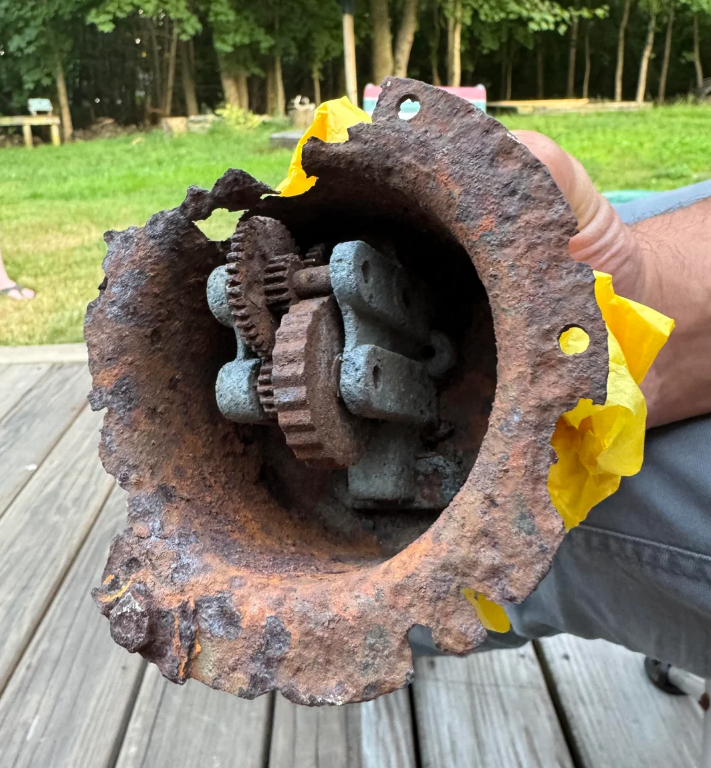
This is part of an old “ahooga” horn. Its also known as a vintage Klaxon horn used on cars from the 1910s to 1930s. These classic horns worked by using a small electric motor or plunger mechanism to drive a gear train. This in turn spun a toothed cam or eccentric wheel. That toothed wheel would rapidly strike or rub against a thin metal diaphragm, causing it to vibrate and produce the iconic “Ah-OO-GAH” sound.
The flanged outer casing would usually hold a projecting horn to focus and amplify the sound. The die-cast square opening would guide the internal plunger. The corrosion and damage to the unit make it hard to recognize at first, but the gear-driven internals and flanged housing are strong indicators of a Klaxon-style horn. Great catch! What they’re holding is a rusty but fascinating piece of early automotive history.
’’Wooden torch-like thing, bulb-shaped end, with regular notches cut into it.’’
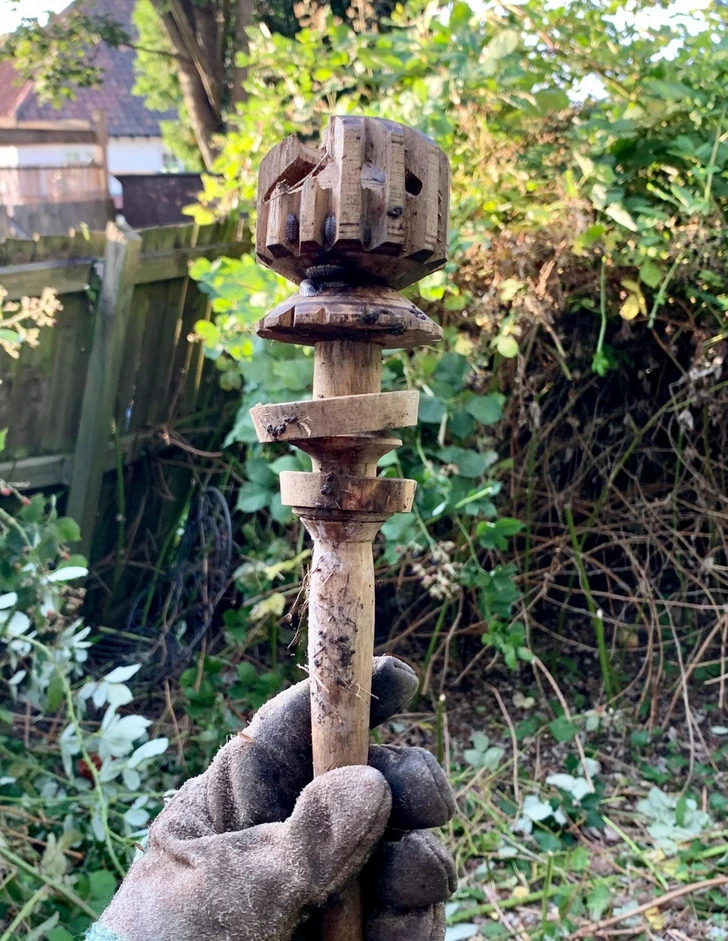
The mysterious object in the image is a molinillo, a traditional wooden whisk from Mexico used to froth hot beverages. Most commonly chocolate caliente (Mexican hot chocolate). Hand-carved from wood, the molinillo features a long handle and a top section with intricate grooves and loose rings that spin when the tool is rolled between the palms. This motion helps aerate the drink, creating a rich, foamy top. While it might look like a decorative spindle or ceremonial stick at first glance, it is actually a functional kitchen utensil with deep cultural roots. Molinillos are still widely used in Mexican households and are often passed down through generations as both a practical tool and a piece of heritage.
“It’s been a mystery to me and a friend of mine for 20 years. I found this on the beach in Pensacola, FL and have asked marine biologists, taken it to museums with no luck.”
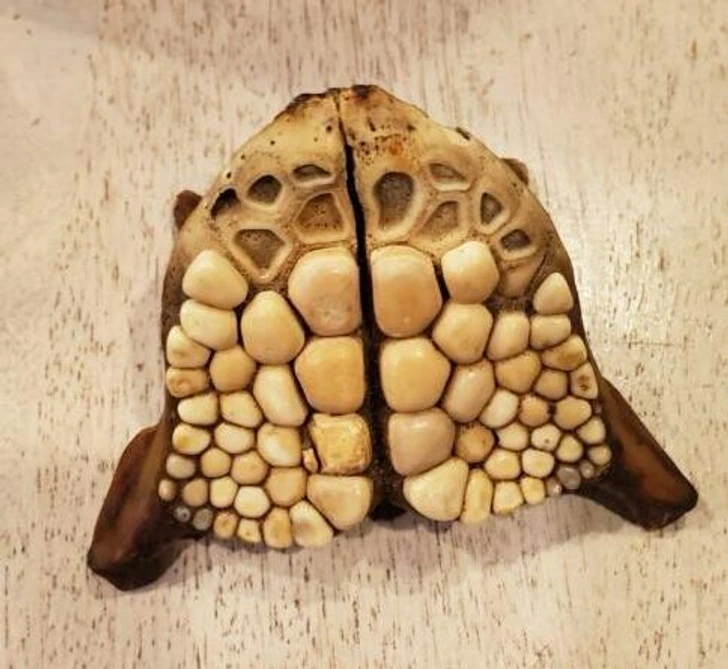
These unique, stone-like structures are part of the fish’s pharyngeal skeleton, located in the throat rather than the mouth. Freshwater Drum use these rounded, molar-like teeth to crush hard-shelled prey such as mussels, snails, and crayfish. The teeth are tightly packed and adapted to generate significant pressure. This helps the fish break through tough exteriors to access soft tissue inside. This structure might resemble mammalian molars or even a decorative carving at first glance. BUT it is a specialized feeding adaptation found in this North American species. The geometric pattern and the wear on the surface make it an intriguing and often misidentified piece of natural anatomy.
“What a liter bottle of soda looks like before compressed air is added.”

The mysterious object in the image is a plastic preform, also known as a PET preform. This small, test tube-like item is actually the initial form used to manufacture plastic bottles. Particularly those designed for beverages like water or soda. Made from polyethylene terephthalate (PET), the preform is later heated and expanded through a blow molding process to form the familiar bottle shape. The threaded top is already designed to fit standard bottle caps. This allows it to seamlessly become part of the final product. While it might resemble a lab container at first glance, it plays an important role in large-scale packaging production.
’’Weird looking thing, found in a rockpool’’
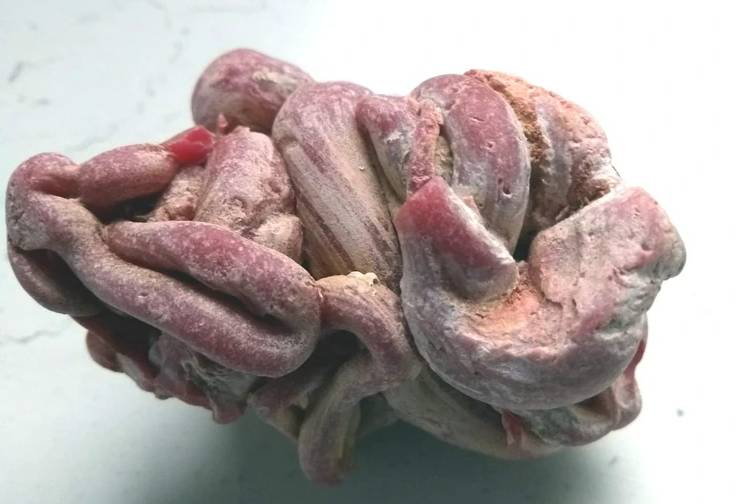
The twisted and knotted object in the image might look like something biological, but it is actually a glob of Hilti HIT-RE 500. A high-performance epoxy adhesive used in construction. This two-part epoxy resin is specifically designed for anchoring and bonding applications, even in extreme conditions like underwater or in wet concrete. What makes this substance especially unique is its ability to retain strength and bond integrity in challenging environments. This includes cold temperatures and submerged surfaces.
When the two components of the epoxy are mixed and exposed to moisture, they undergo a chemical reaction that causes them to cure into a rock-hard mass. The tangled form seen in the photo is likely the result of unused epoxy that was discarded or cured accidentally. This formed a solid, rubbery knot. While it may look like a piece of twisted meat or organic tissue, it is actually a testament to modern engineering materials and their surprising versatility.
’’I found this little guy under the stairs in a parking garage. His hair is made by what seems like glue dipped into dirt?’’
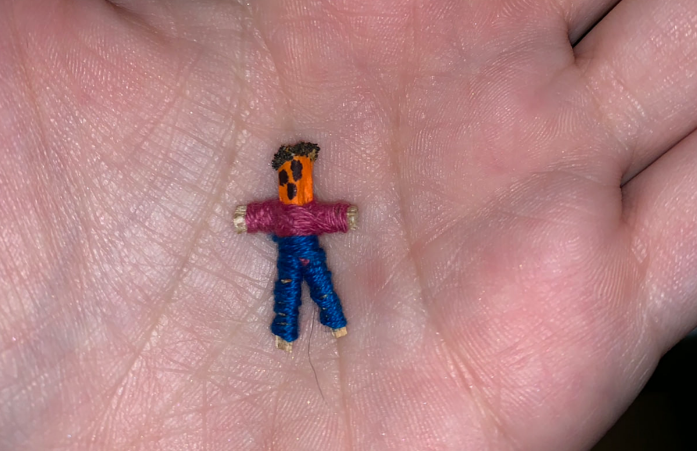
The mysterious object in the image is a worry doll, also known as a trouble doll. Worry dolls originate from Guatemalan folklore. Traditionally handmade from bits of wire, wood, and colorful thread, these tiny dolls are given to children to help ease anxiety or fears. According to legend, a child tells their worries to the doll before placing it under their pillow at night.
By morning, the doll is believed to have taken those worries away. This allows the child to wake up feeling at peace. These miniature figures are usually crafted in bright clothing and facial features using thread or paint. Just like the one shown in the image. While they are often sold as souvenirs, they also carry a deeper cultural meaning tied to emotional well-being and folk traditions.
Read More: People Were Baffled By These 10 Mystery Items and Got Unexpected Answers
’’Found this on an apple.’’
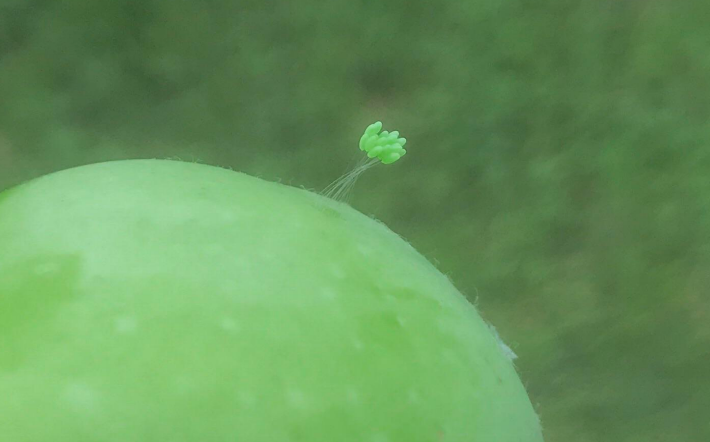
These mysterious items are green lacewing eggs. Green lacewings are beneficial insects commonly found in gardens and agricultural areas. They are known for their role in controlling pests like aphids. What makes their eggs especially unique is the way they are laid. Each egg is perched delicately on the end of a long, hair-like stalk. This unusual adaptation helps protect the eggs from predators and cannibalism by keeping them elevated above the surface. Often on leaves or fruit like the one in the image.
The eggs themselves are tiny, pale green, and look almost like miniature balloons on stilts. In just a few days, they hatch into voracious larvae sometimes called “aphid lions” due to their aggressive feeding behavior. While they may look strange or even alien-like at first glance, green lacewing eggs are a sign of natural pest control hard at work.
’’Objects that sound like bells.’’
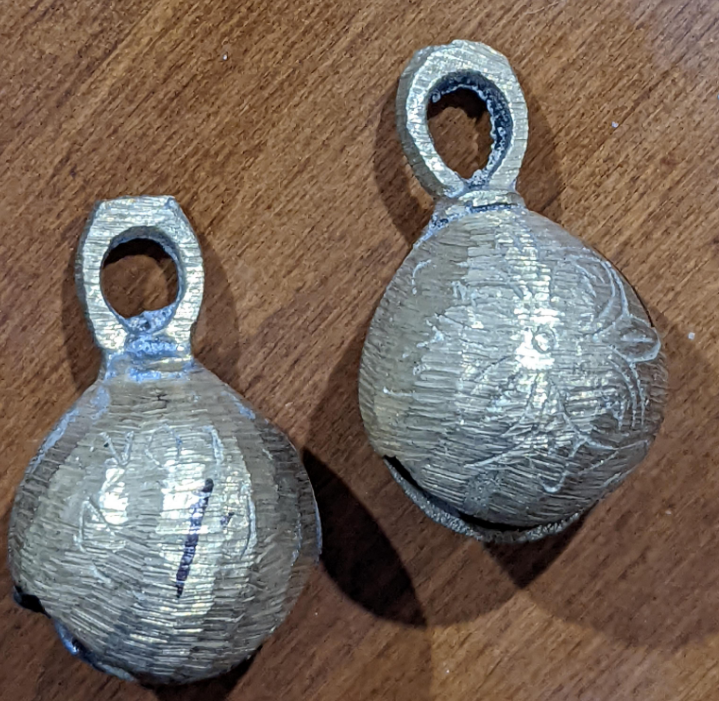
The mysterious items in the image are decorative jingle bells. They are also commonly referred to as sleigh bells or sometimes clam bells depending on regional or cultural context. Made of metal, often brass or a similar alloy, these bells have a rounded shape with a slit and a small metal ball inside that creates a jingling sound when shaken. The loop at the top allows them to be attached to string, ribbon, or leather straps.
These types of bells have been used for centuries in various ways. This includes the use on horse harnesses, traditional dance costumes, festive decorations, and even as percussion instruments. The floral engraving and worn texture seen in the photo suggest that these may be handmade or vintage. Possibly with cultural or ceremonial significance. Despite their small size, jingle bells like these often carry rich history and joyful sound wherever they are used.
’’This was found in the backyard. The months are spelled out and the year states 1827.’’
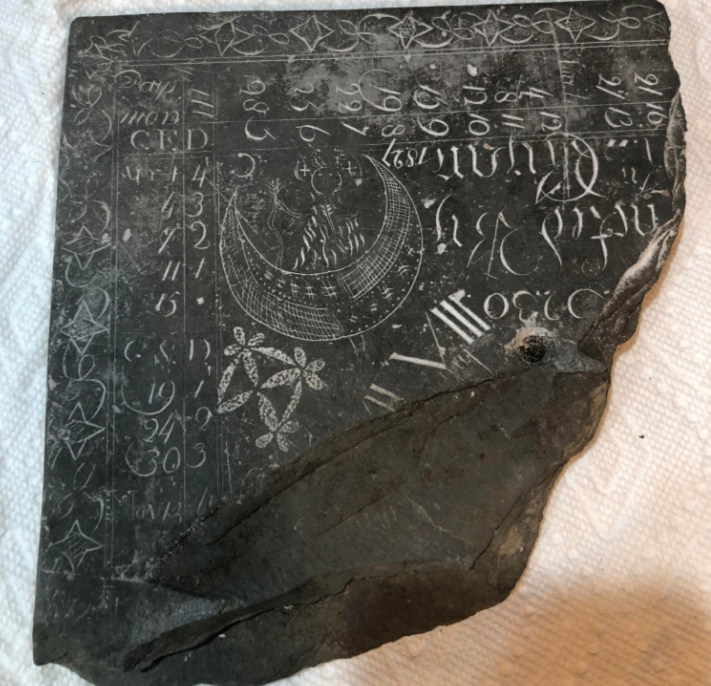
The mysterious object in the image is a practice gravestone carving, also known as a slate test tablet or apprentice stone. These pieces were commonly used by stone carvers to practice engraving skills before working on actual headstones. The slab appears to be made of slate, a fine-grained material that was widely used in the 18th and 19th centuries due to its ease of carving and durability.
The mixture of reversed letters, Roman numerals, decorative elements, dates, and scattered text suggests this was never meant for public display but rather served as a training surface. Apprentice carvers would use such stones to perfect their letter spacing, artistic motifs, and chiseling techniques. While it may resemble a broken piece of a gravestone, its disjointed design and experimental markings confirm it was a tool for learning the craft rather than a memorial.
’’This fell out of one of my dad’s record sleeves.’’
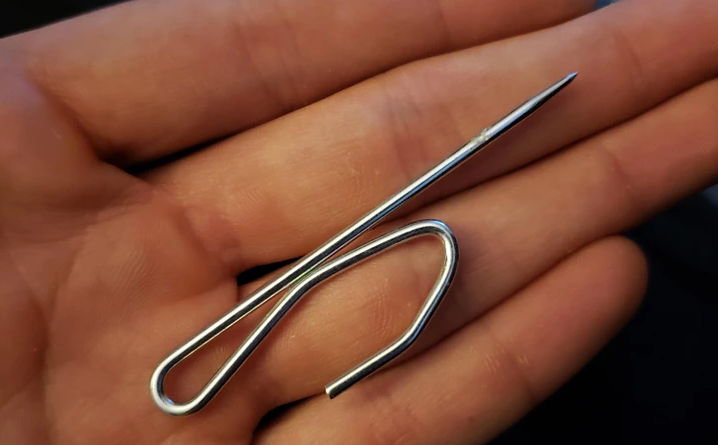
The object in the image is a curtain hook. Specifically a pin-on drapery hook used for hanging pleated drapes or curtains. These metal hooks are designed with a sharp, pointed end that pierces through the stiff backing or pleat of a curtain, while the curved end slots into the carriers or rollers on a curtain track or traverse rod. The shape allows the curtain to hang securely and move smoothly along the rail. This type of hook is commonly used with pinch-pleat, goblet, or tailored pleat curtains in more formal window treatments. Though it may look simple or even confusing at first glance, it plays an important role in neatly suspending and adjusting decorative drapery panels.
’’I saw these in sidewalks in 2 cities in Norway.’’
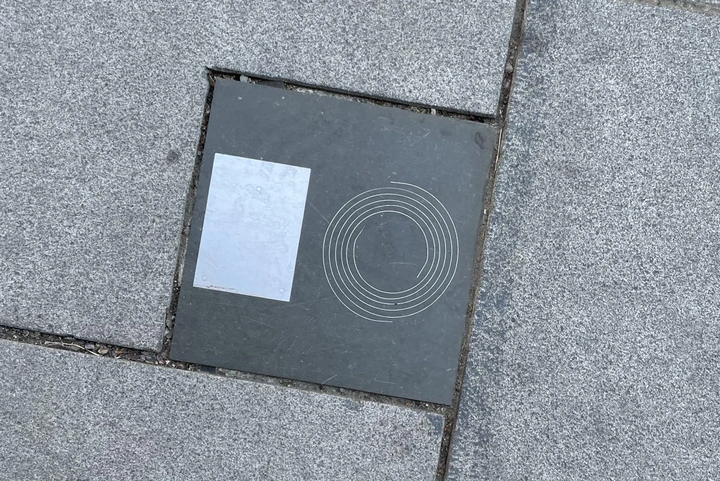
The mysterious object embedded in the pavement is an ice and snow sensor commonly found in colder countries like Norway. This type of sensor is installed at ground level and is designed to detect freezing conditions such as the presence of ice, snow, or cold moisture on the surface. It works by monitoring temperature and moisture levels in real-time. This triggers automated systems like ground heating elements or alerts to prevent dangerous slipping hazards.
The circular design with concentric rings often houses the sensor components, while the adjacent metal square may assist with heat conduction or house an identification plate. These sensors are a part of modern smart city infrastructure, especially in places where icy conditions pose a serious risk for pedestrians. While it might look like an art tile or marker at first glance, it is actually a quiet piece of technology helping to keep public spaces safer during harsh winters.
’’These were all over the beach. I think they were alive.’’
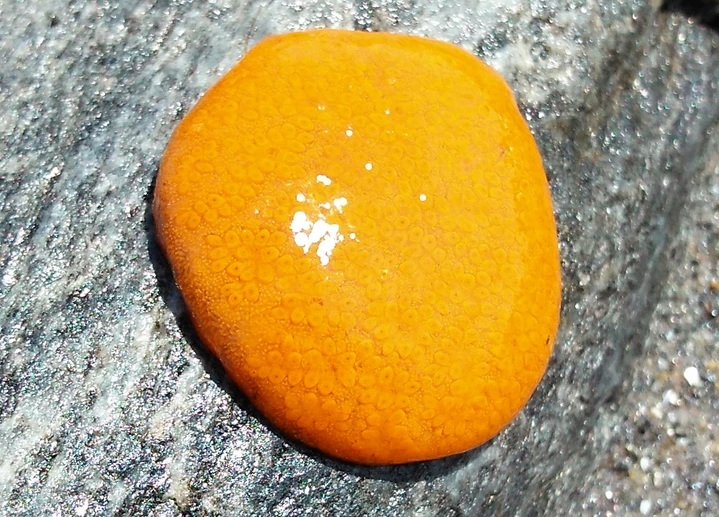
The strange orange blob in the image is no mysterious item – its a marine invertebrate known as sea pork. Sea Pork are a type of tunicate or sea squirt. Despite its fleshy and jelly-like appearance, sea pork is actually a colony of small, filter-feeding organisms encased in a firm outer tunic. These colonies can range in color from bright orange and pink to purple, gray, or even black, depending on the species and environment. Found along coastal areas and tidal zones, sea pork often washes up on beaches. This leaves people confused about whether it is animal, plant, or something else entirely. Though it might look like a lifeless blob, sea pork is very much alive in its natural habitat. They also play an important role in ocean ecosystems by filtering plankton from the water.
Read More: What Are These Things? People Ask The Internet to Help Identify Strange Objects
’’This circular object on top of a car’’

The unusual dome-shaped object on the roof of this car is a Bubbl device, a signature feature of a Bubbl ride-share vehicle. Bubbl is a Texas-based transportation service that focuses on providing safe, secure rides, often for children, seniors, or individuals with special needs. Unlike typical ride-share platforms, Bubbl thoroughly vets and trains its drivers. Many of whom are off-duty police officers or first responders.
The blue dome on the roof is not a light or a siren but a visual identifier, signaling that the vehicle is part of the Bubbl fleet. This clear, glowing bubble helps riders and parents easily spot the car, especially during school pickups or coordinated transport. While it might look like a futuristic police light or security scanner at first glance, its purpose is purely identification and branding for a ride service committed to safety and trust.
’’My girlfriend found these in her dinner.’’ – Rather Mysterious Items Indeed
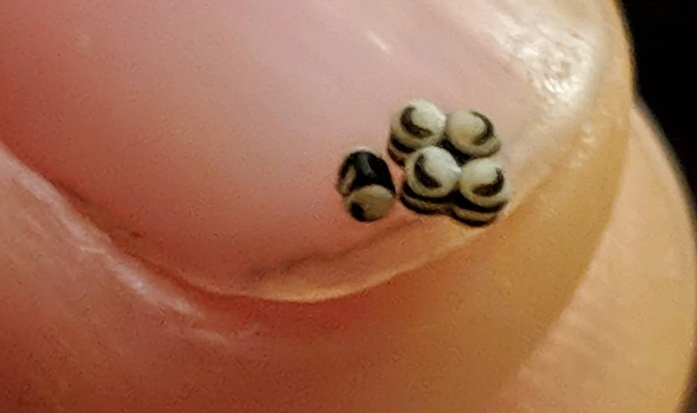
The tiny striped spheres in the image are stink bug eggs, particularly from the brown marmorated stink bug or a similar species common to gardens and crops. These insects, often referred to as vegetable bugs, are known for laying their eggs in tight clusters on leaves, stems, and sometimes unusual places like clothing or fingernails if contact occurs. Each egg is small, round, and decorated with a black-and-white pattern that resembles miniature panda faces or soccer balls. These markings are actually part of the egg’s structure and may serve as camouflage or warning coloration.
Once hatched, the young nymphs begin feeding on plant juices, which can cause significant damage to fruits and vegetables. While they might look like decorative beads or debris at first glance, these little spheres are a reminder of just how small and sneaky some garden pests can be. Removing them early is a smart step in keeping plants safe from infestation.
’’A plastic ’hook’ that is probably used as a kitchen tool.’’
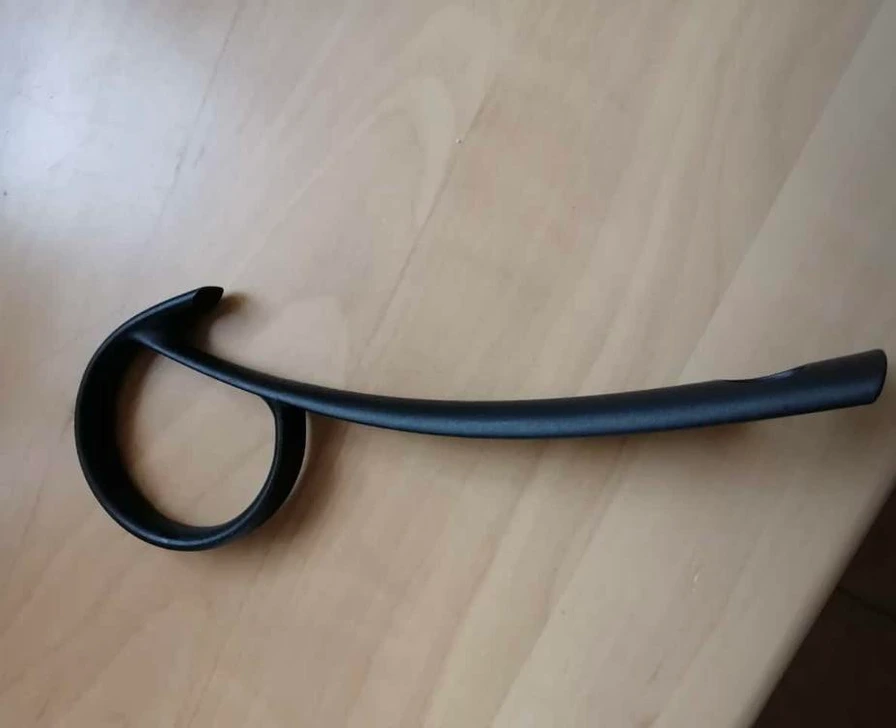
The item in the image is a ring pull can opener. A tool designed to help people easily open pop-top or ring pull cans without straining their fingers or nails. The looped end is slipped under the ring tab of a can, and the long handle provides leverage to safely lift and pull the tab upwards. This reduces the risk of injury and makes opening cans much easier, especially for individuals with limited hand strength, arthritis, or long nails. The curved, ergonomic design offers both comfort and control. While it might look like a stylized hook or even a modern art object at first glance, it is a practical kitchen tool built for convenience and accessibility.
’’What are these things I keep seeing them at nearly all the London bus stops?’’
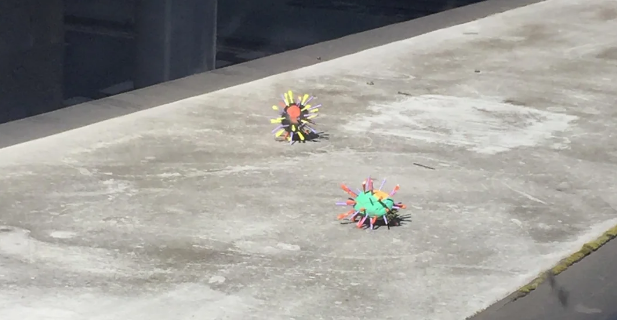
These mysterious items show a fun example of potato art or decorated craft potatoes. These potatoes have been transformed into quirky, colorful characters by sticking various materials, likely toothpicks, straws, or pipe cleaners, into them, mimicking spines or limbs. This type of project is often used in schools or community art activities to encourage creativity using everyday items.
The visual result gives off a spiky, sea-urchin-like effect, but it’s clearly playful rather than natural. The vibrant colors and abstract shapes suggest this is not a scientific or industrial object, but rather a form of DIY art or craft project. They were probably left outdoors temporarily for display or drying. While it might confuse passersby from a distance, up close it’s a charming example of turning ordinary vegetables into imaginative sculptures.
’’These weird crystals are growing on my highlighter.’’
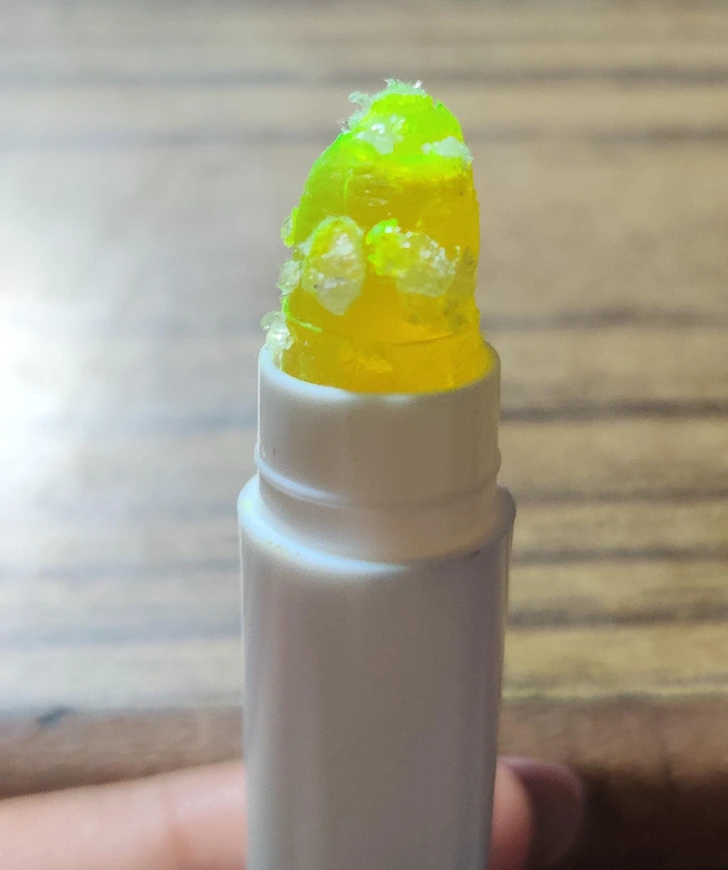
The crystals on the tip of this highlighter are likely dried pigment and dye residue that have crystallized due to evaporation. Highlighters contain fluorescent ink made from water, dye, and various solvents or stabilizers. When the cap is left off or the pen is exposed to air for an extended period, the liquid components can evaporate. This leaves behind solidified dye particles.
These can sometimes form small, translucent or shiny crystals, especially around the tip where the ink is most concentrated. While it might look unusual or concerning, this is generally harmless and just a sign that the highlighter is drying out. In some cases, rehydrating the tip slightly or using the pen on absorbent paper can help restore flow. If crystallization is extensive, it may be time for a replacement.
“What is this small metal object found on the streets of Bath? Has a lengthwise hole through the object, one edge of which is wavy.”
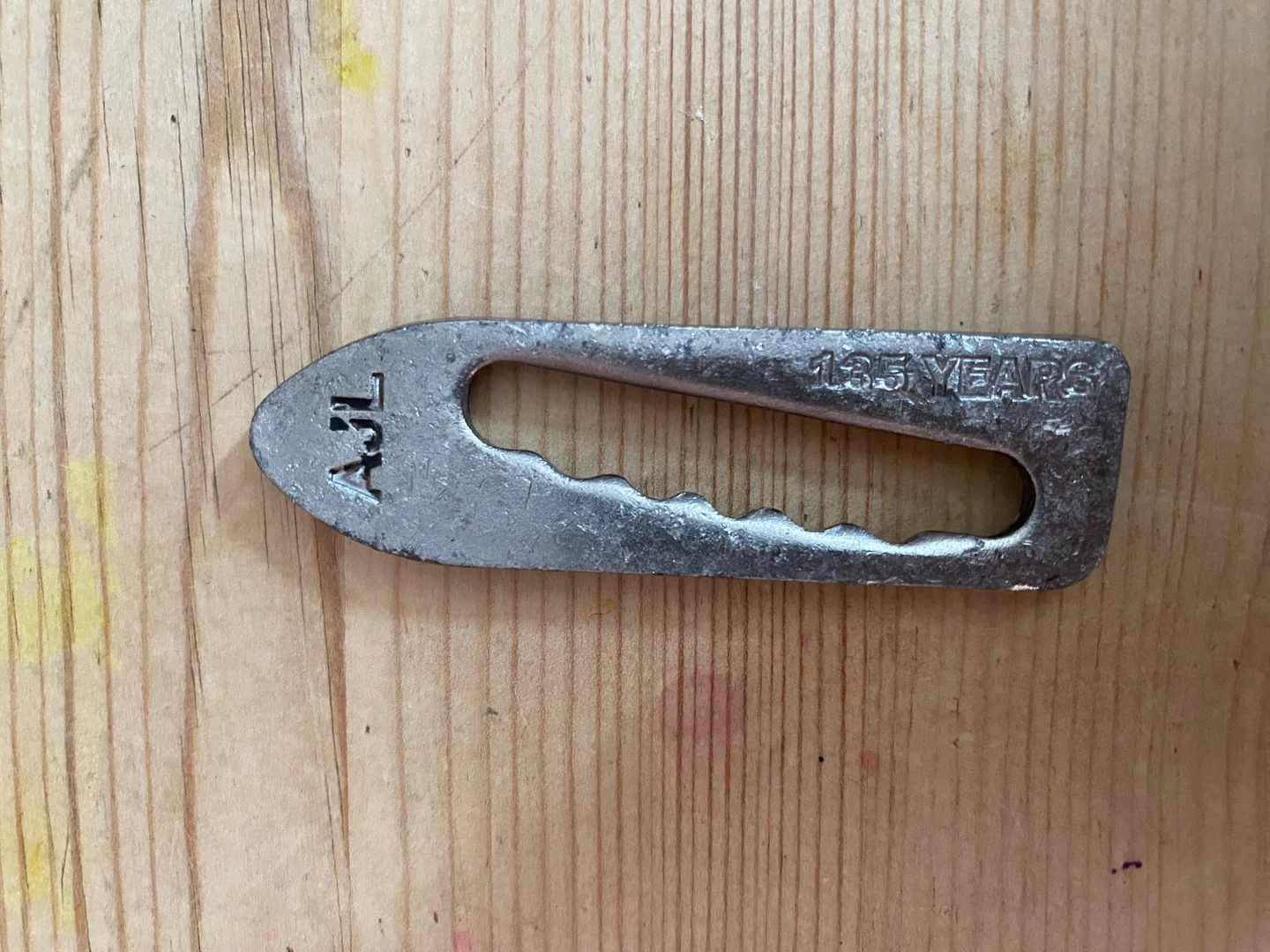
The mysterious item in the image is a drop-latch lock pin, often used in trailer latches, gates, or utility enclosures. This particular piece acts as a retaining clip or sliding lock that fits into a slot and drops down to hold a bar or panel securely in place. The notched edge allows it to catch or lock into corresponding grooves or hardware. The elongated shape makes it easy to lift and slide when unlocking.
It’s common in agricultural, industrial, or trailer settings where simple, heavy-duty mechanical fastening is required. The markings (like “135 YEARS”) likely commemorate a brand anniversary, and “AJL” is probably the manufacturer. Though it may look like an abstract tool or part of a handle, it’s actually a rugged and straightforward locking mechanism component.
Read More: People on Reddit Describe The Weirdest Side Effect They’ve Ever Experienced From Medication

